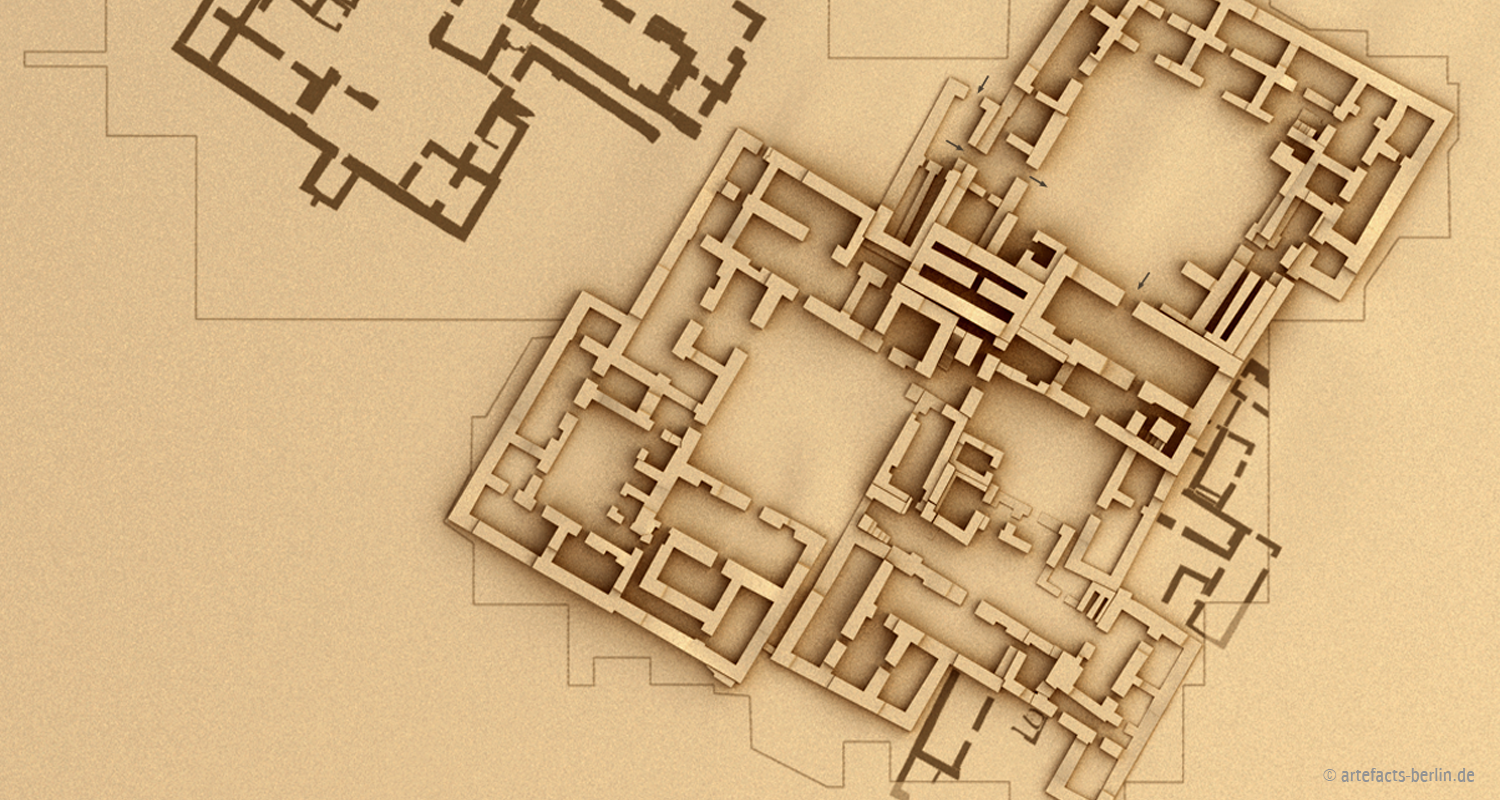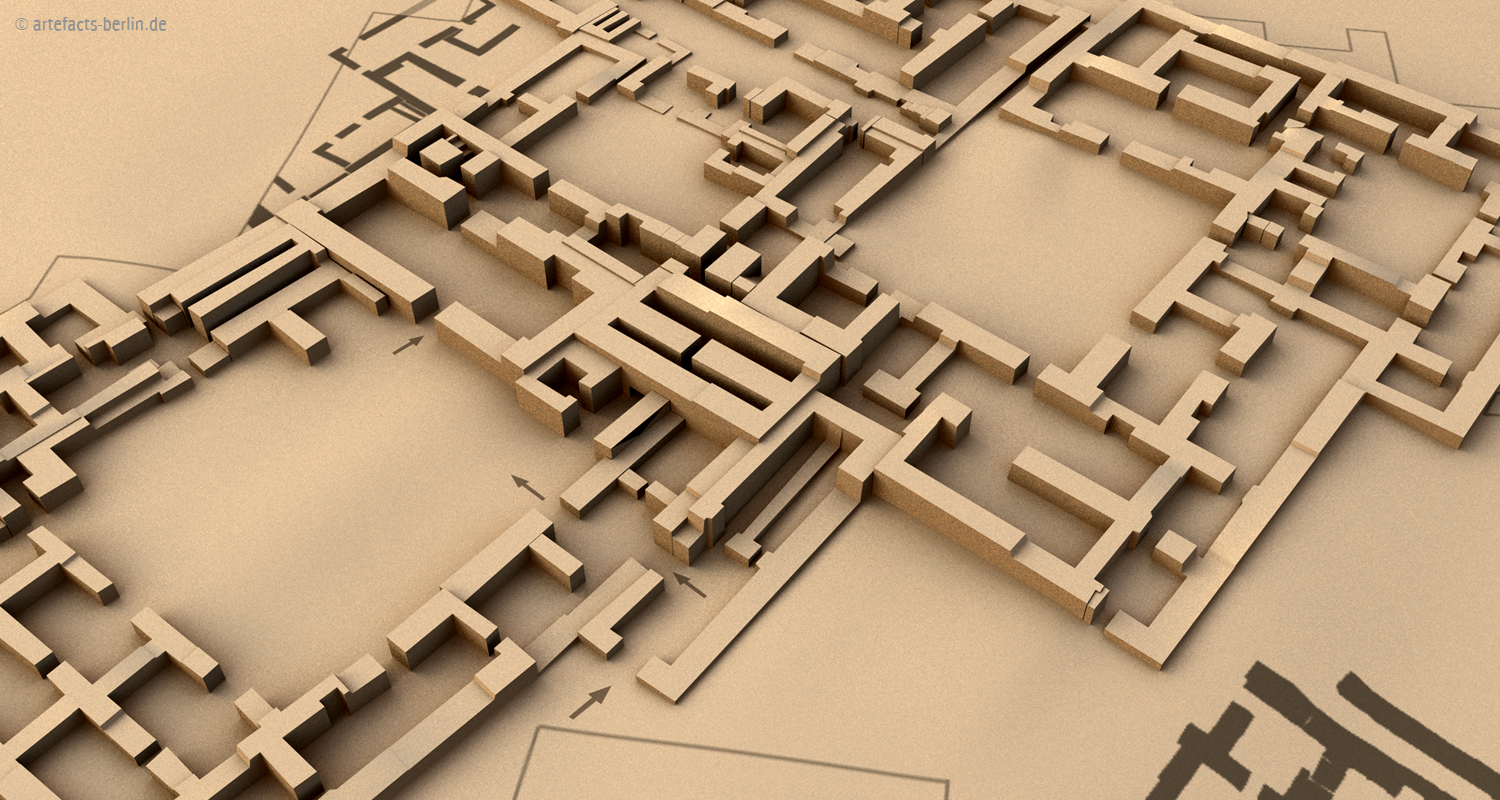About the project
Tell Schech Hamad, ancient Dur-Katlimmu, is situated in Northeast Syria at the Khabur river. It has a long settlement history, and was an especially important city during the Neo-Assyrian empire in the 1st millennium BCE. During excavations, a large structure, the so-called “Red House”, was uncovered at the centre of the lower city. It was built and utilised during the Neo-Babylonian Period (626–539 BCE), and eventually destroyed by fire.
Subsequent to its complete excavation, researchers decided to preserve the original mud brick architecture of the “Red House” by re-plastering its uncovered walls.
We created a 3D model of the re-plastered remains of the “Red House” in order to gain a visual impression of the project’s possible outcome regarding the heights of its walls etc. Additionally, the visualisations were used to present the project to potential sponsors.
Literature
- Kreppner, F.J. 2006: Die Keramik des „Roten Hauses“ von Tall Šeh Hamad / Dur-Katlimmu (=BATSH 7).
- Kühne, H. 1993: Vier spätbabylonische Tontafeln aus Tall Šeh Hamad, Ost-Syrien. State Archives of Assyrian Bulletin VII, 75-107.
- Kühne, H. 2000: The „Red House“ of the Assyrian Provincial Center of Dur-Katlimmu, in: P. Matthiae et al. (eds.), Proceedings of the First International Congress of the Archaeology of the Ancient Near East, 761-769.



